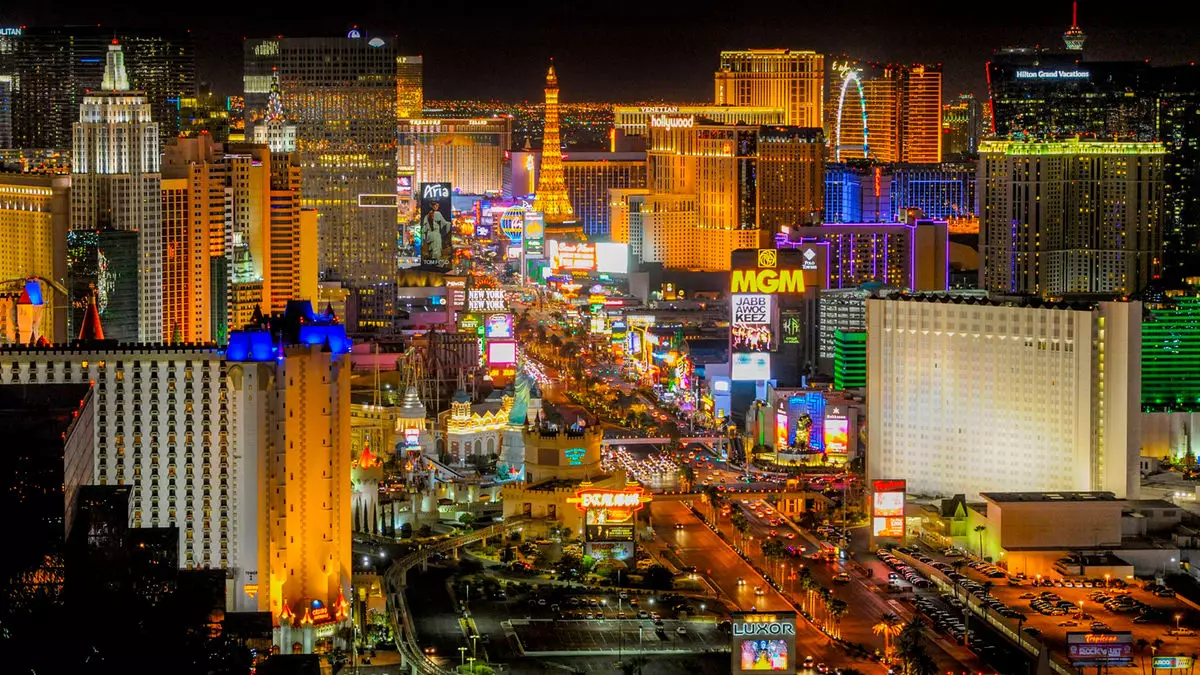Las Vegas, known for its vibrant nightlife and bustling tourism scene, is currently facing a notable decline in visitor numbers. The statistics from March reveal a 7.8% drop in visitation compared to the same month in the previous year, marking the third consecutive month of downturns in a trend that is drawing concern from the city’s tourism authority. The Las Vegas Convention and Visitors Authority (LVCVA) released a report highlighting these figures, yet it is crucial to analyze the underlying factors affecting this shift in fortune.
March’s visitor count settled at around 3.4 million, a significant number, yet overshadowed by the evident downturn amid fluctuating economic conditions. Notably, the city experienced a sharp 11.9% drop in February—a number that might initially appear alarming, especially sandwiched between months of festive events like the Super Bowl. However, this context suggests that the decline could be less dire than it seems, with the unique circumstances of February, which included an extra day due to leap year, complicating direct year-over-year comparisons.
Encouraging Signs Amidst Declines
In the midst of these challenges, there are signs of resilience. Convention attendance increased by 10.2%, reaching 533,900 attendees, driven partially by events like the Healthcare Information & Management Systems Society conference. While overall visitation experiences a slump, the uptick in convention participation may indicate a pivotal shift toward business-related tourism. This facet of the tourism industry often implies longer stays and higher spending, essential for absorbing financial shocks within the broader leisure travel sector.
Equally noteworthy is the increase in the average daily room rate, which rose by 3.1% to $183.86. Such figures suggest that while the volume of visitors may be decreasing, the remaining tourists are willing to spend more per night, which could mitigate some financial impacts from the drop in numbers. It’s an encouraging sign that Las Vegas may be evolving its appeal, enhancing its offerings to attract a segment of the market that values experience and quality over mere quantity.
Wider Economic Forces at Play
However, the data indicating declining numbers is complemented by broader economic trends that could be influencing tourist behaviors. Passenger traffic at Harry Reid Airport fell by 3.9% in March, marking a continuation of an unsettling trend that could relate to complex geopolitical factors. Canadian and Mexican air travel—integral components of Las Vegas’s visitor demographic—have also shown worrying decreases. Speculation surrounding U.S. political rhetoric and potential tariffs could be contributing to a hesitance among international travelers, especially when considering the increased costs and uncertainties involved in traveling to the U.S.
In discussing these trends, LVCVA president Steve Hill has acknowledged the complexities of interpreting data, suggesting that “one month does not make a trend.” Yet he also emphasized a cautious approach in budget forecasting, anticipating a conservative estimate of a 5% decline in room tax revenue. This suggests an ongoing vigilance amongst Las Vegas’ tourism stakeholders as they brace for anticipated challenges.
Bright Futures and Strategic Adaptations
Despite the pessimistic forecasts, there’s a compelling case for optimism regarding Las Vegas’s adaptability and resilience. The tourism industry is no stranger to cyclical fluctuations, and historical data shows that major cities often bounce back following downturns. The burgeoning presence of business and convention tourism hints at a strategic pivot that could ultimately redefine the future of Las Vegas tourism.
As the LVCVA contemplates its next budget, the proactive identification of trends and tourist behaviors will be crucial. There are opportunities for growth in marketing strategies centered around long-haul travelers and increased event-driven tourism. As Las Vegas seeks to harness its strengths, such as unique entertainment options and luxury accommodations, the focus will need to remain on creating compelling reasons for both local and international tourists to visit, enjoy, and spend money in the city.
The path forward may not be smooth, but with a commitment to innovation and adaptability, Las Vegas could emerge stronger from current challenges, illustrating that even in difficult times, resilience and evolution are key pillars of its identity.


Leave a Reply